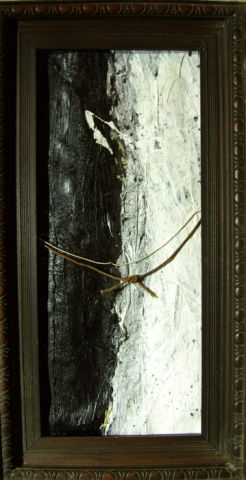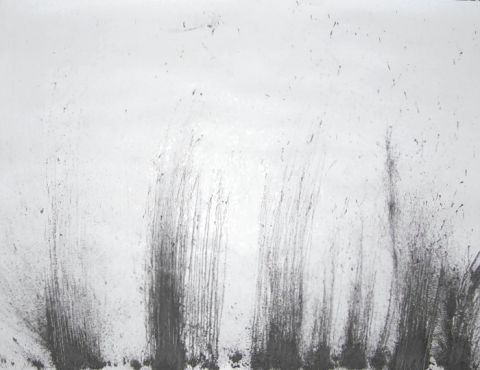There has been some debate recently in the blogs (see David Minton – Dead and Dying Flowers post #50) in regards to resolving the desire to work intuitively and the desire to enter artistic/stylistic debate which has lead to discussion of post-modernist failings (if I can sum it up that way). Jon Bowen makes a point that modernism reflected the ‘tenuous and fragile creatures we truly are’ and that post-modernism is ‘a thinly-veiled attempt to disguise this’.
While I can’t disagree with Jon’s summation, I think it is a little more involved than that. Certainly, I see a lot of sarcastic, contemptuous, angry work but I’ve recently come to realize that this work is as expressive as modernist work. What I see behind the irony and contempt is a real almost panicked desire to understand this global reality we now live in and perhaps frustration at the complexities of living which make us feel impotent.
The world has changed and living has become more difficult in many ways. We are losing touch with the things that keep us feeling. Simply stated, I think we feel overwhelmed. Who wants to feel the emotions of seeing our planet destroyed in front of our very eyes, or watch helplessly as other cultures are destroyed, or feel fear at the threat of catastrophic illness, or realize the our lives can be irrevocably changed by someone risking monies somewhere else on the planet. Dire vision perhaps, but all things we have witnessed recently.
Art has always reflected our view of the world and how we see ourselves in it, post-modernism is no exception.
It may seem crass; the business of doing art, but it is just that, it is business. And while some artists feel it is ‘defending one’s corner’ (to quote Jon Bowen again) in order to justify one’s work, I think of it as explaining my intentions. Let’s face it, communicating is at best ambiguous and if our spoken words can easily be misunderstood, what chances do our visual efforts have. And as such, in business people want to know where they stand and what they’re dealing with.
I’m not trying to defend post-modernism, in fact there is no defense for it, a feeling many had once about modernism, but I do think it is important to remember that it expresses our time; it reflects the issues were thinking about, even if some artists would refute that publicly.
In regard to intuition, I think it is important not to confuse impulse with intuition. David Minton says, ‘Intuition can be simply a polite term for blindness. Gut reaction: all sorts of crimes are committed on the basis of it. Trusting one’s intuition might be the negation of judgment. Intuition is taste, which in turn is internalized learned value appearing as natural.’ I would apply those terms to impulse rather than intuition. But then I freely admit that I have perhaps had a different experience of intuition.
However you look at it, it’s all good debate and good material for pondering.



